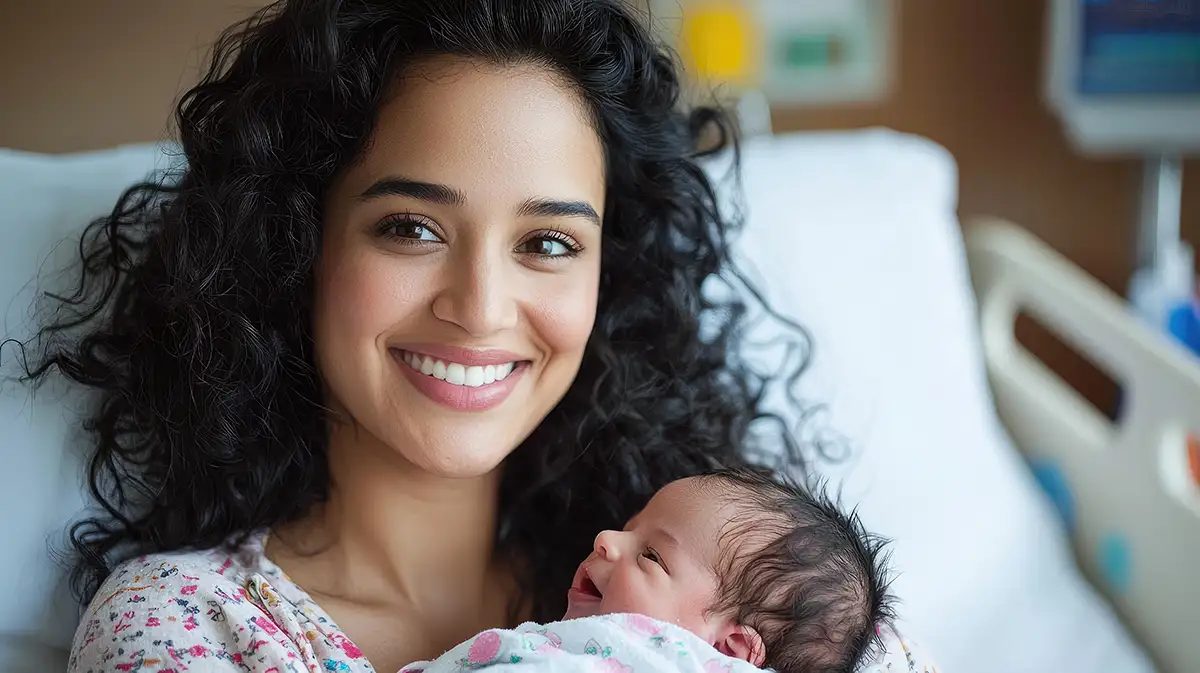C-section Delivery under the care of Dr. Kavya Shetty

C-section, short for cesarean delivery, is performed when the normal vaginal birth seems unsafe for the mother or the baby.
It’s a surgical procedure to deliver a baby, involving a cut in the lower abdomen to access your uterus.
If you’re concerned about your or the baby’s health and need an opinion on which delivery mode will be the safest for you, consult Dr. Kavya Shetty — a qualified and experienced gynecologist known for her professionalism and a wide range of specialties in reproductive medicine.
The doctor monitors your baby’s position, your health, existing medical conditions, and other factors to decide on the most effective and safest delivery option.
C-sections can be an elective procedure or an emergency. Based on your health, Dr. Kavya will recommend a cesarean delivery to mitigate the risks of complications during and after delivery.
Dr. Kavya Shetty
A c-section can be a life-saving procedure for the mother and the baby if natural delivery poses a threat to their lives. Having performed multiple c-sections, Dr. Kavya can assist you throughout your pregnancy journey and in your recovery phase. Book a consultation immediately to discuss different delivery methods and find the safest option for your case.
Request Appointment Now
When Do You Need a C-section?
An emergency c-section is needed when you face difficulties during labor. In some cases, the doctor advises you to go for a cesarean delivery in advance to ensure your and the baby’s well-being.
Here is when Dr. Kavya recommends c-section delivery:
- You Are Pregnant With Multiples: If you are carrying twins or triplets, a-section makes a good choice, as delivering multiples vaginally can be challenging.
- Baby Goes in Distress: Your doctor will monitor your baby’s heart rate throughout labor. If the fetal heart rate drops or there’s any sign your baby isn’t handling the labor well, you will need to undergo an emergency c-section.
- Labor Doesn’t Progress: Sometimes, the cervix doesn’t dilate, or you might be fully dilated, but the baby won’t come down the birth canal, requiring a c-section delivery.
- Breech Position: An ideal position for your baby for delivery is head down and bottom up. If they are lying in a head-up-bottom-down position, the doctor considers a c-section a safer way to deliver the baby.
- Placenta-related Issues: C-section is also recommended for women with low-lying placentas that partially or entirely block the cervix.
- Prolapsed Umbilical Cord: If the umbilical cord comes down the birth canal during labor, an emergency c-section will be needed.
- A Previous Surgery: If you’ve had a previous c-section, especially with a vertical incision, a c-section might be recommended for future deliveries.
Sometimes, women decide to have C-sections to avoid going into labor or bear the pain and complications during childbirth.
If your pregnancy is progressing well, Dr. Kavya advises you to go for a normal delivery. She works at hospitals equipped with state-of-the-art technology and the infrastructure needed to perform emergency C-sections.
What Happens in a C-section Delivery?
Here’s what you can expect during c-section:
- The anesthesiologist will administer an epidural to numb the area from your abdomen to the feet. Though rare, general anesthesia can be used for the surgery.
- An incision is made on your abdomen and the uterus.
- The doctor can make a horizontal or vertical incision based on the baby’s position and other factors.
- They remove the baby, cut the umbilical cord, and remove the placenta.
- The incision is stapled or stitched.
If you were given regional anesthesia, you will be awake during the procedure and can hold your baby immediately after the surgery.
C-section is not as painful as vaginal birth. In fact, you won’t feel any pain during the surgery. Recovery can, however, take longer than normal delivery.
What are the Risks?
Dr. Kavya will discuss the risks of c-sections to help you understand what the recovery period will look like and what possible complications can occur during and after the surgery.
Fortunately, c-section is a fairly safe procedure and is done within 10-15 minutes. Emergency c-section is done more quickly to get the baby out as fast as possible.
Here are the risks:
- Infection
- Blood clots
- Fetal injury
- Injury to the surrounding organs
- Reactions to anesthesia
If you deliver a baby through cesarean delivery, your risk of having subsequent deliveries through c-section increases.
Is Vaginal Birth After a C-section Possible?
This is the most common question women ask. Vaginal Birth After C-section or VBAC is possible.
However, it’s not recommended for women who have had a c-section because of a condition that can recur in subsequent pregnancies.
Dr. Kavya has performed many deliveries (in patients with a c-section history) vaginally. If you want to attempt a VBAC, speak with the doctor to know if it’s safe and what are the chances you’ll deliver normally.
VBAC is a good option for women who:
- Have had a previous c-section because the baby was in breech, went into distress, or you had a failed induction.
- Have a low transverse incision
- Have a history of one c-section
- Go into labor naturally
- Are in overall good health and fit enough to deliver naturally
- Wait at least 18 months or longer to plan another pregnancy.
Women planning a c-section followed by a natural birth should consult a gynecologist to understand the risks.
There’s a chance an emergency c-section might be needed if you face any issues during labor. The risk of c-sections also increases if you are induced for labor.
